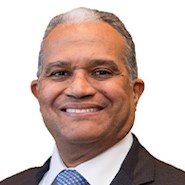
By Feniosky A. Peña-Mora, Sc.D., P.E., NAS, CCM, F.CIOB, NAC, Dist.M.ASCE
Population growth, shifting transportation and energy usage patterns, and increasingly severe weather events tell us one thing: The world needs civil engineers now more than ever. While civil engineering is in an exciting era of innovation and technical advancement, the profession faces a major workforce shortage. The rate of professionals leaving the field is increasing, while the rate of those entering and remaining in it is decreasing. Meanwhile, our aging infrastructure assets are in dire need of civil engineers’ help.
According to the Brookings Institution’s report, “Seizing the U.S. Infrastructure Opportunity: Investing in Current and Future Workers,” on average, 1.7 million infrastructure workers will leave their jobs each year from 2021 to 2031. The report also states that the Bureau of Labor Statistics has warned of a “silver tsunami” among infrastructure workers, with many employers anticipating that 10% or more of their workforce will retire yearly. This means that over the next decade, approximately 17 million infrastructure workers will need to be replaced, which is more than the current entire infrastructure workforce.
As the voice of the profession, ASCE is leading the charge to recruit and retain infrastructure professionals. To start, we identified the current workforce’s challenges and goals. What are we as an industry doing well, and what isn’t working? From there, we evaluated the roles of compensation, flexibility, and advancement opportunities while determining ways to support all workers effectively.
To attract new talent, we’ve set our sights on four long-term goals: increasing the affordability of education, creating multiple entry points into engineering and infrastructure professions, developing college programs to support engineering students, and encouraging high school students to pursue careers in infrastructure.
ASCE has partnered with the National Governors Association Center for Best Practices to release the policy brief, Strategies to Address Engineering Workforce Challenges. We have also partnered with the American Council of Engineering Companies and the American Public Works Association to combat workforce development challenges through the Engineering & Public Works Roadshow. As a joint effort, we have traveled across the U.S. to highlight the transformational work of engineers and public works professionals, showing the next generation the awe-inspiring projects they can be a part of if they join this rewarding field.
Although we are far from completely addressing workforce challenges in civil engineering, ASCE is committed to continuing to find solutions that will help our profession thrive and ensure that workers feel supported. Without the infusion of young talent, the industry will struggle to fill the jobs needed in our communities. We must prioritize encouraging young people to join this profession and, equally important, remain in it.
So, how could you help? You could volunteer in schools, sharing the excitement and purpose of our work to inspire high school students to consider careers in infrastructure. You could support college students through mentorship, academic guidance, and professional development opportunities. You could collaborate with universities to help shape curricula and experiential learning programs that expose students to the dynamic nature of the infrastructure profession.
You could also advocate for and support initiatives that increase the affordability of education and create accessible pathways into the profession. Most importantly, you could engage with early career professionals to help retain them within our exciting profession.
The challenge is not only about attracting new professionals, but it is also just as much about supporting and retaining the exceptional ones who are already part of our community.
Feniosky A. Peña-Mora, Sc.D., P.E., NAS, CCM, F.CIOB, NAC, Dist.M.ASCE, is the executive president for research and dean of engineering and sciences at Tec Monterrey in Mexico. He is the 2024-25 ASCE president.
This article first appeared in the July/August 2025 issue of Civil Engineering.



